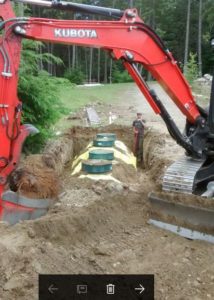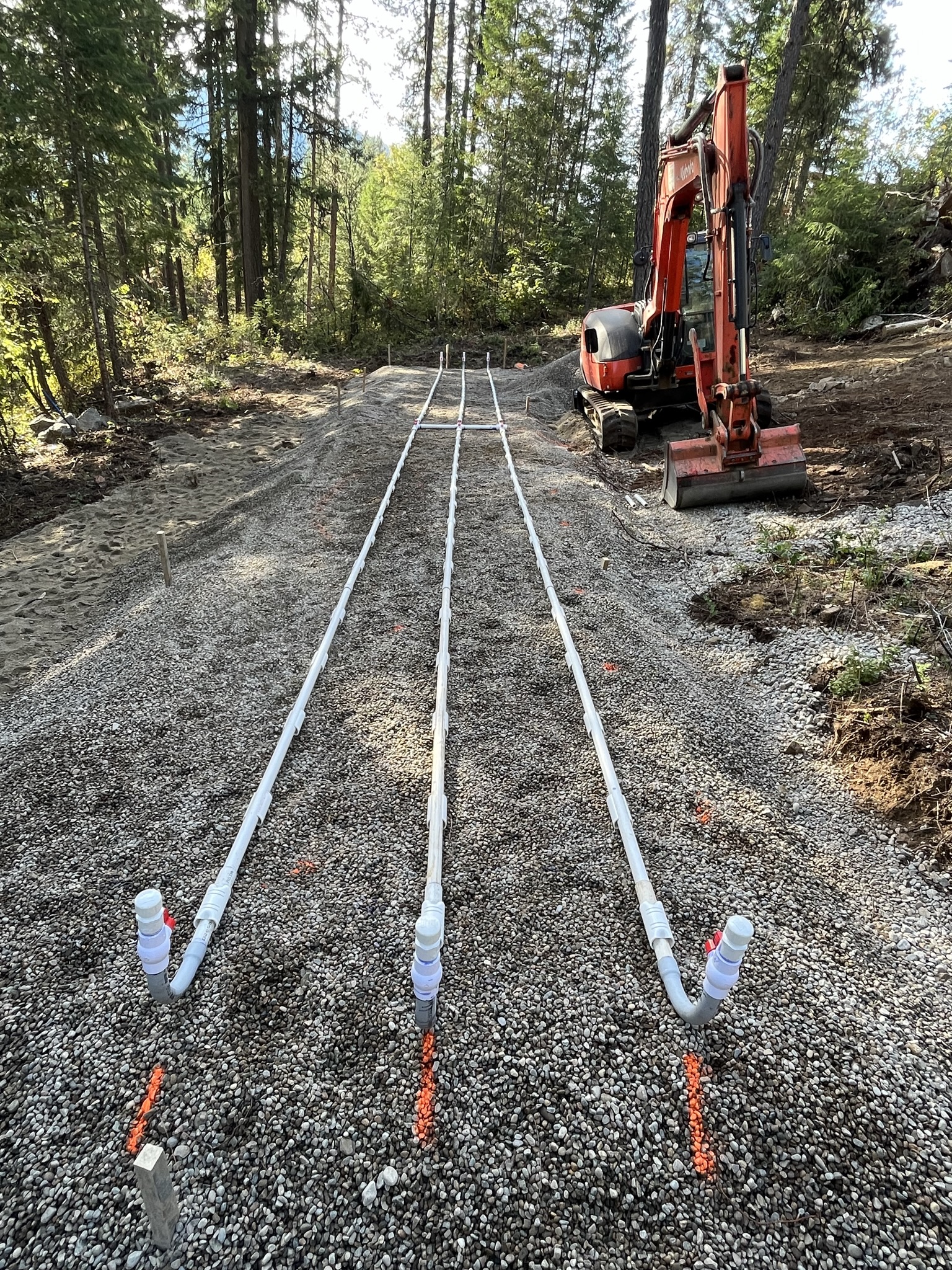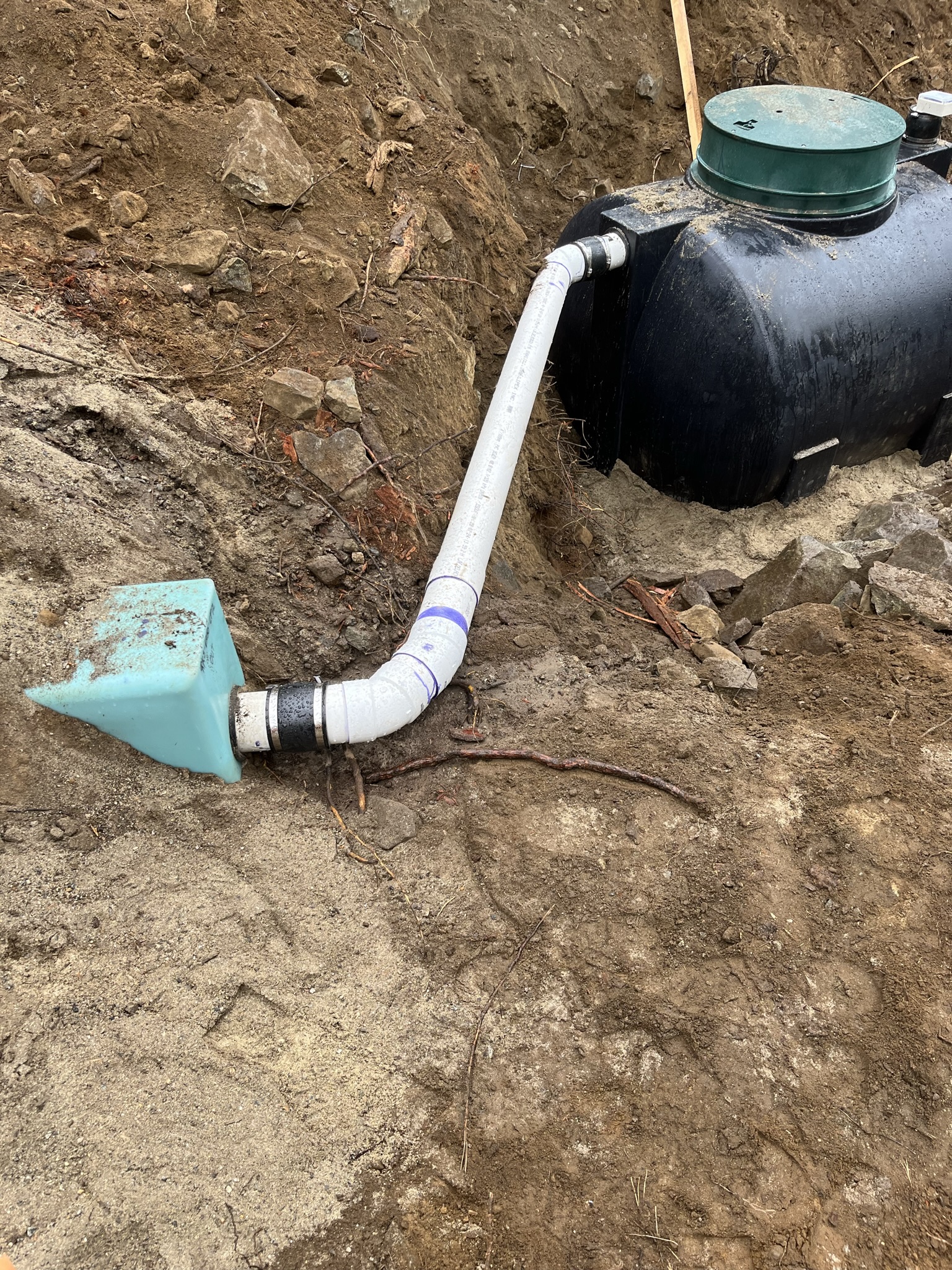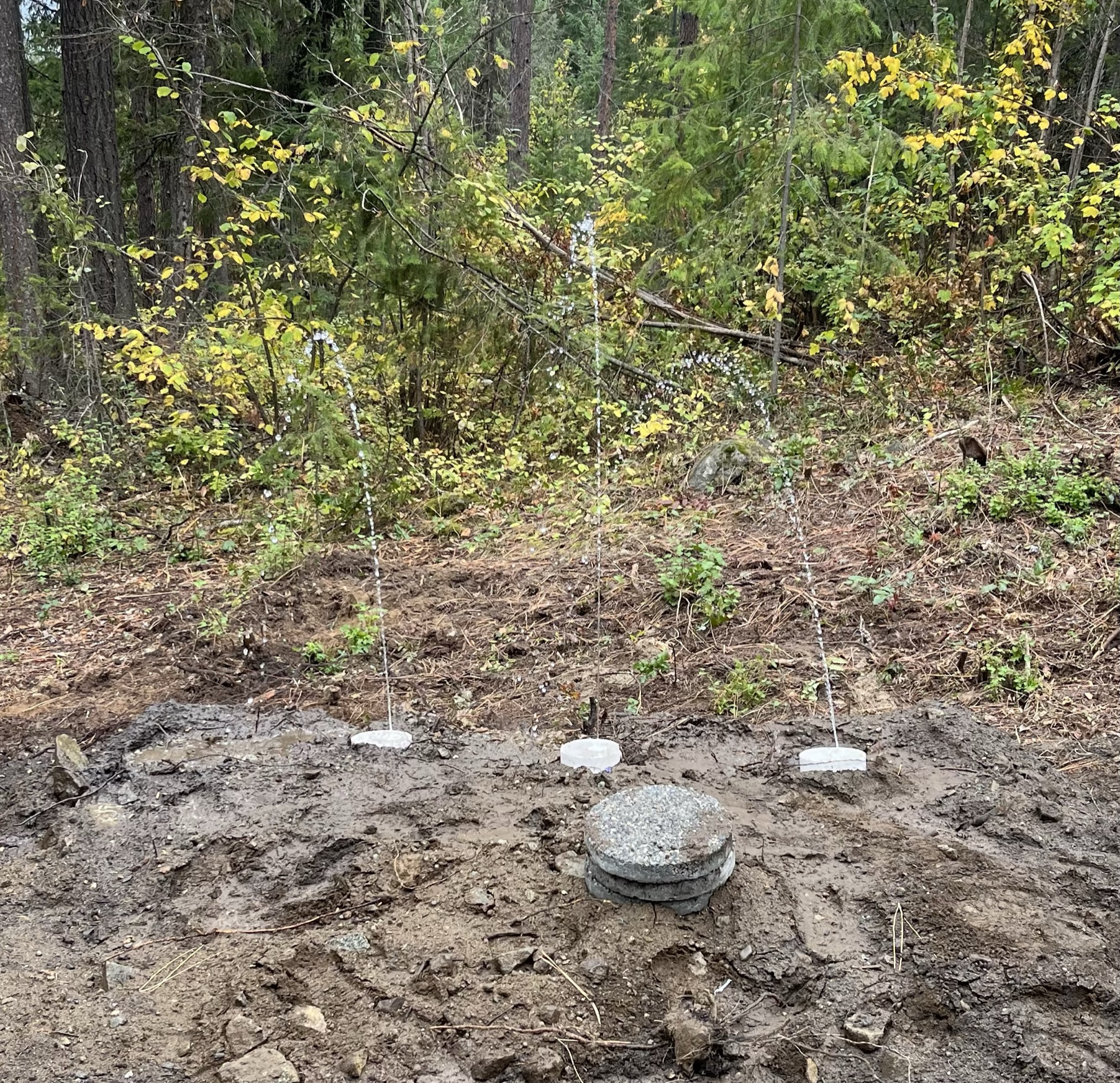Sand Mounds and other Complex Systems
When soil conditions are POOR such as:
- too high a percolation rate (like gravelly sand)
- too low a percolation rate (like clay)
- there is a need to fit a high capacity system into a small footprint
- there is a high seasonal water table (groundwater)
- coarse fragments in the soil (soil particles over 2mm in diameter) are over 60%
…you will need a pressurized distribution system – often a sand mound, at-grade seepage bed, or (at minimum) a seepage bed with pressure distribution. Unlike simple gravity systems, pressure distribution distributes the effluent over the entire field area all at once which dramatically lengthens the life a septic field in poor soils.
At-Grade Seepage Beds:
Here are three photos of an at-grade seepage bed I installed in fall of 2022. At-grade seepage beds are a less expensive alternative to sand mounds that can meet SPM standards in mediocre soils. The system pictured below is pretty sweet. It uses a gravity “flout-based” dosing system instead of an electricity powered pump to dose the field. The flout is the small black tank on the right in the middle photo (the septic tank on the left feeds into it.) The third photo shows an excellent “squirt height” at the ends of the laterals in the field during system testing . This squirt height of over 5′ was achieved with a vertical elevation difference of 13.5′ between the outlet of the flout and the height of the laterals in the field. This is a slick system that saved the homeowner over $10,000 versus a comparable sand mound with a pump installed! You need at least about 12.5′ of vertical fall from flout tank to field to create enough pressure for this system to work.
Sand Mounds:
When soils are poor, shallow or there is a high seasonal water table, a sand mound is often the only design that will meet SPM standards. Putting a simple seepage bed in soil conditions like this will result in early failure of the field and likely cause groundwater contamination due to insufficient treatment of the raw sewage effluent. The below photos show a sand mound system I installed solo in 2022 which included land clearing, a septic tank, a pump chamber and all the plumbing – in less than 45 hours start to finish. This job was completed in 7 working days. The first photo shows about 70 yards of special “mound sand” making up the base of the sand mound. Next comes a thin layer of pea gravel and the laying out of the lateral pipes (5x runs of 1″ in this case.) Then more pea gravel, then geotextile (the third picture,) and finally 6″ of topsoil and grass seed. The special sand in a sand mound is the most expensive part of this type of system. It can cost as much as $100/yard for this coarse sand which has very few fines in it.
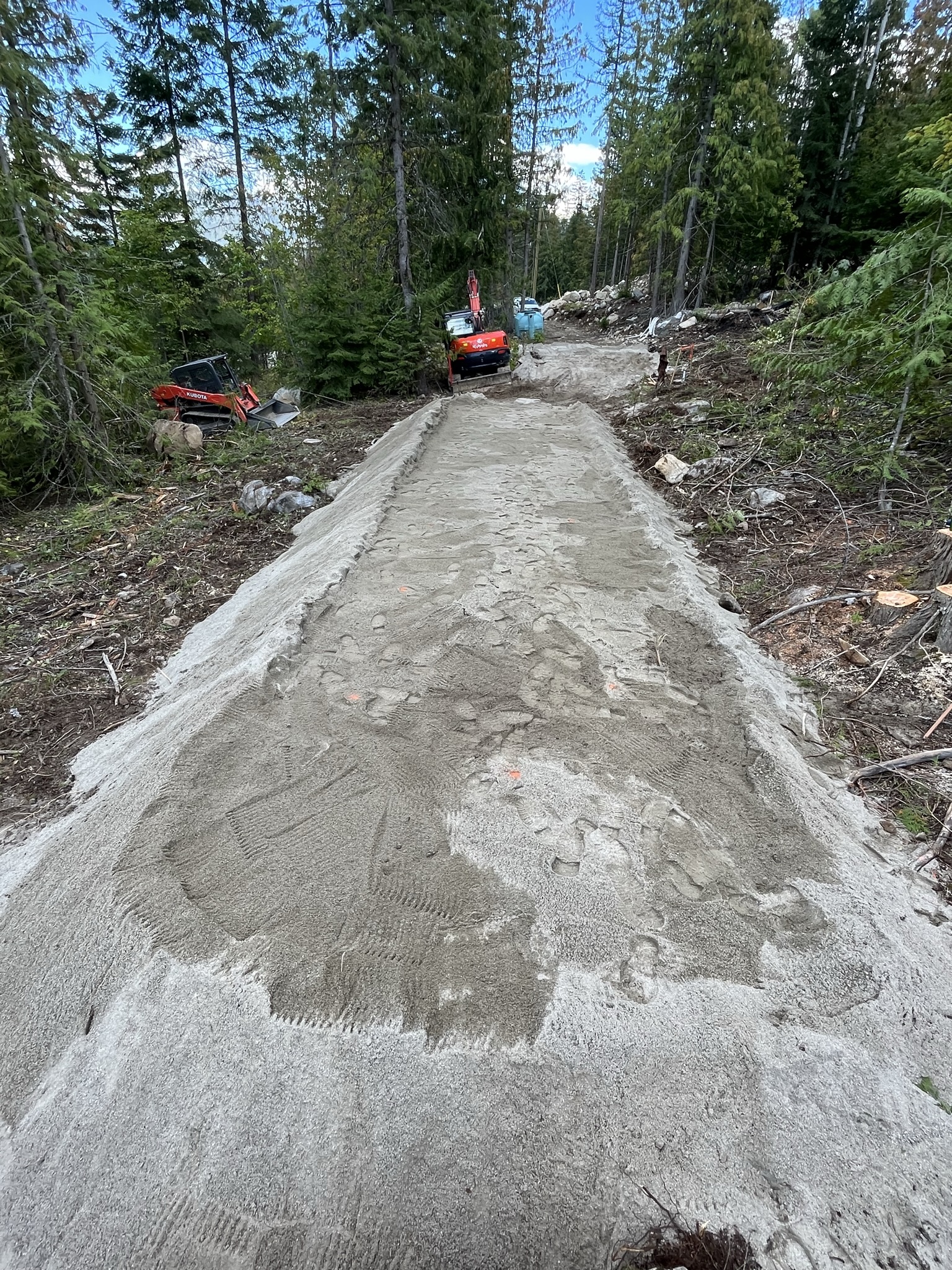
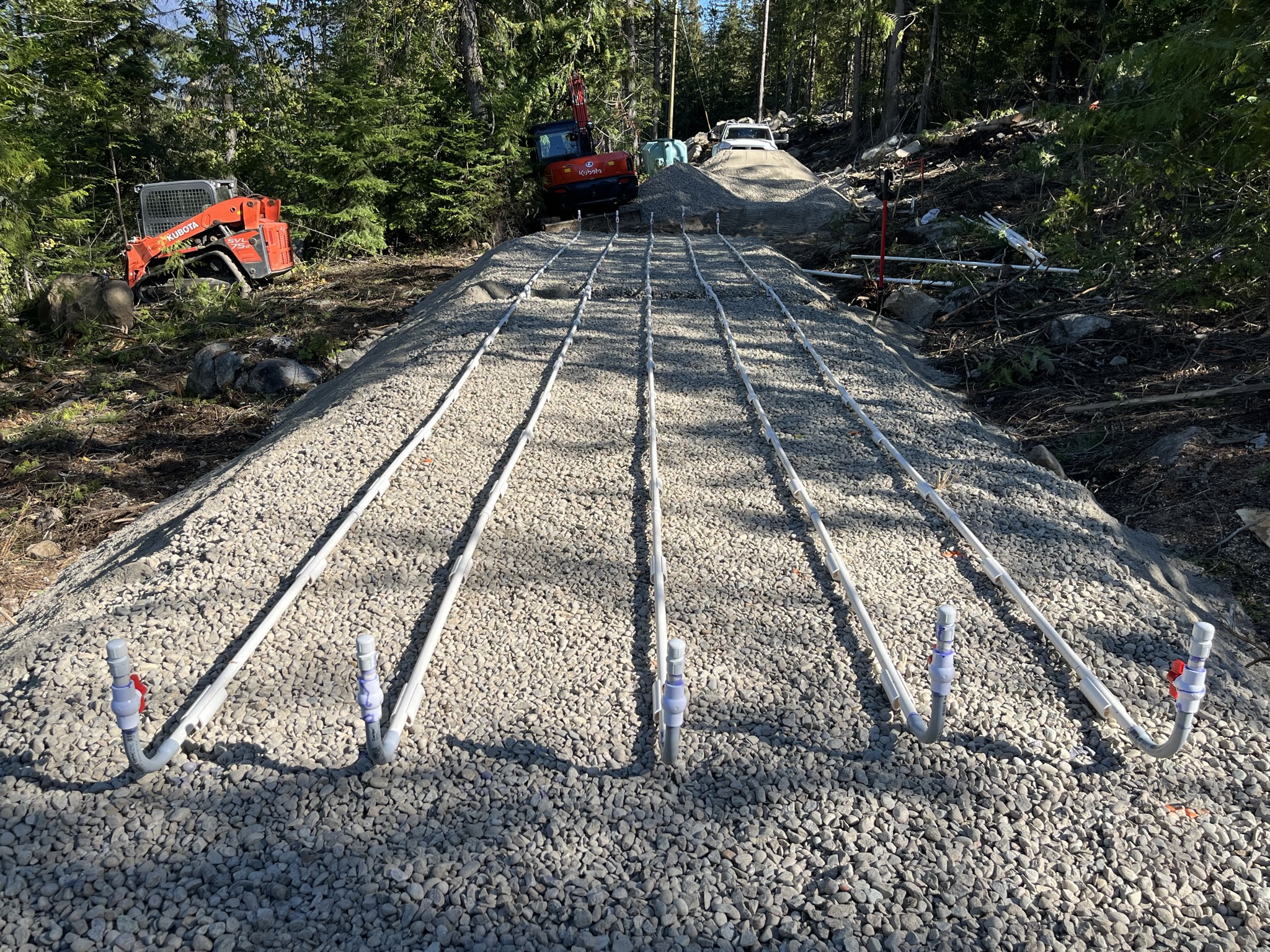
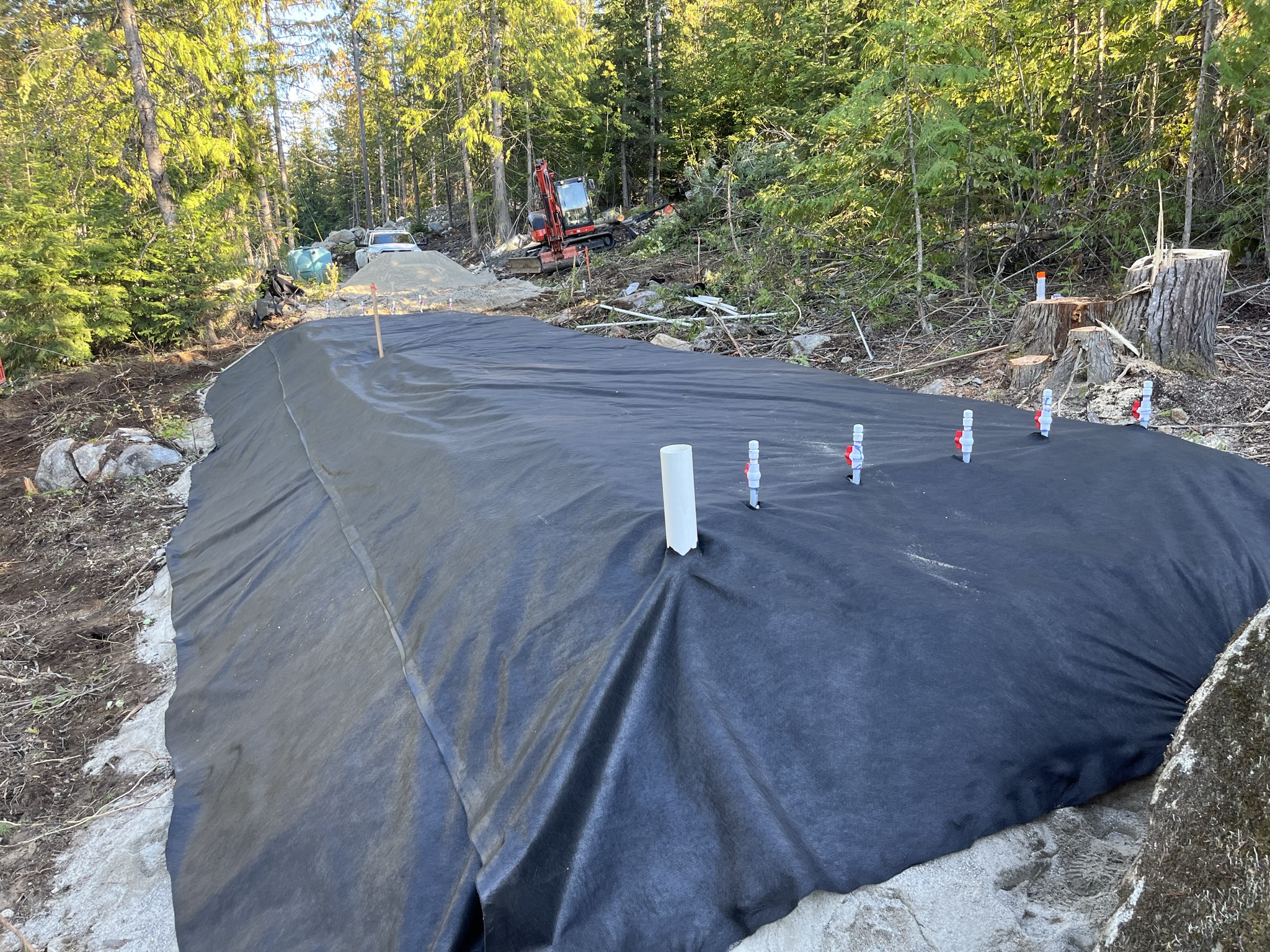
Here are a couple photos of a massive sand mound system I completed in August 2017. Soils were very shallow with poor drainage and there was considerable ground water year round on this property. An Engineer was called in to design this 95′ long sand mound. It required a whooping 120 yards of special mound sand and another 20 yards of drain rock. Hopefully your system will be easier to install than this one!
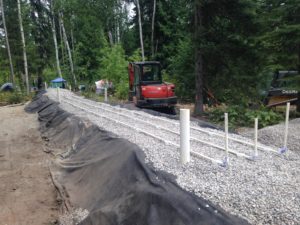
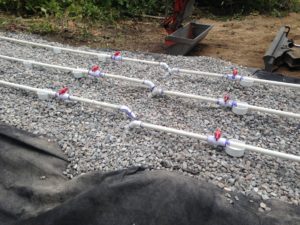
This same site gave us another challenge: to get the septic tank installed at the right height we had to chip through 3″ of bedrock in one spot to get the depth required to bury the septic tank.
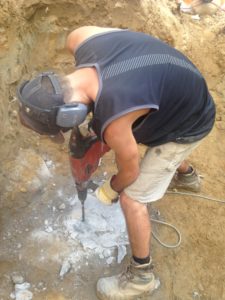
Here is how a typical pump installation looks. The final 12″ riser has yet to be installed. This pump chamber had to be installed 3′ deep into the ground – so the bottom of it is about 8′ below grade. A union coupler allows the pump to be disconnected within 6″ of grade as per SPM code.
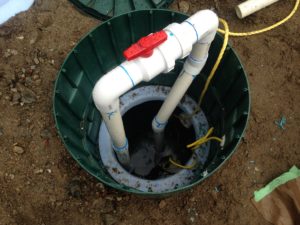
Here are some photos of yet another sand mound completed back in 2017. While the majority of the systems I install are still gravity based simple systems, there has been many many sand mounds and other complex systems required over the years!
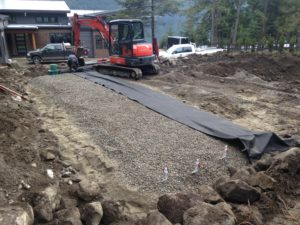
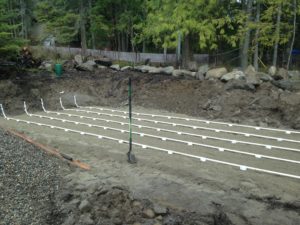
Using Two Septic Tanks:
There isn’t much complex about a system using two septic tanks in a row – but it is a useful solution to a host of problems in unique situations. Having two separate tanks will drastically improve the life expectancy of a septic field over a single large tank. It is also a great solution when bedrock doesn’t allow one big tank. And a third good reason for using two tanks is when you have a septic field much lower than the tanks in which case a second tank helps settle the effluent and reduce the stirring up effect of effluent entering the tank at a high velocity.
